For businesses, sales are the foundation on which everything is based. Without a product or service to sell, your organization wouldn’t exist! An effective sales strategy is crucial to the survival (and hopefully thriving) of your organization, and guess what; a great tool to help is a sales funnel.
The Idea Behind the Sales Funnel
 A sales funnel is an analogy used to explain how the sales process works. It serves as a visual representation of how an individual moves from knowing nothing about your organization to becoming a loyal customer and hopefully brand evangelist for you. The mindset of a sales funnel views sales as a proactive process of making customers (as opposed to the more passive process of finding customers). The underlying goal of the sales funnel is to convert those who are unaware of your organization to happy customers by finding as many quality leads as possible and getting the percentage of people who go through the funnel as high as possible.
A sales funnel is an analogy used to explain how the sales process works. It serves as a visual representation of how an individual moves from knowing nothing about your organization to becoming a loyal customer and hopefully brand evangelist for you. The mindset of a sales funnel views sales as a proactive process of making customers (as opposed to the more passive process of finding customers). The underlying goal of the sales funnel is to convert those who are unaware of your organization to happy customers by finding as many quality leads as possible and getting the percentage of people who go through the funnel as high as possible.
The Stages of the Sales Funnel
Many different takes on the sales funnel exist, but this is the simplest and (I think) most effective way of viewing it.
- The lead: The sales funnel begins with individuals who are in your target audience. They may be interested in what you offer, but have no contact yet with your organization and are unaware of what your organization offers. This part of the funnel is the largest, so it’s important to utilize a variety of effective lead-gathering strategies. You just have to show them how you can solve a problem for them…maybe one they didn’t even know they had!
- The prospect: At this stage, you’ve made contact with the individuals. They are aware of your organization and how you can meet their needs. They’ve expressed some interest in your organization that merits you pursuing these potential customers. Often times, prospects are simultaneously evaluating their other options, so it’s important to clearly showcase what sets your organization apart from your competitors.
- The committed: After all your hard work and negotiations, these individuals are now persuaded. They possess the means and desire to purchase your product/service, and all that’s left is working out the logistical details, such as a contract. Individuals at this stage can still back out though, so proactive effort into quality customer service is needed to prevent them leaving.
- The customer: Finally! These individuals happily buy your product/service and
 become a customer. In situations where contracts need to be renewed or purchases made again, the customer will enter a re-evaluation phase. In some respects, they become a prospect again since they can now evaluate their other options. Effective customer service will minimize the amount of time and effort they spend weighing alternatives, and ideally they will be such a satisfied customer that they renew the contract or buy more of your product right away. Remember, it is much easier to have a repeat customer than generate a whole new lead. Keep those customers happy. If you have a good customer base, they will become your cheerleaders. You know what that means…FREE MARKETING!
become a customer. In situations where contracts need to be renewed or purchases made again, the customer will enter a re-evaluation phase. In some respects, they become a prospect again since they can now evaluate their other options. Effective customer service will minimize the amount of time and effort they spend weighing alternatives, and ideally they will be such a satisfied customer that they renew the contract or buy more of your product right away. Remember, it is much easier to have a repeat customer than generate a whole new lead. Keep those customers happy. If you have a good customer base, they will become your cheerleaders. You know what that means…FREE MARKETING!
Reasons to Utilize the Sales Funnel
- It’s an effective measurement tool. Sales funnels allow you to measure the
 number of individuals at each stage, the percent of customers made from leads, and the average time it takes to move a customer down the funnel. Gathering these metrics provides you with a more holistic method of comparison to gauge successful sales efforts than just sales completed. After enough time using the sales funnel, you’ll be able to see a baseline of what you can expect from your sales team. Deviations from this baseline will show you what works well or what needs to be improved in your sales strategy.
number of individuals at each stage, the percent of customers made from leads, and the average time it takes to move a customer down the funnel. Gathering these metrics provides you with a more holistic method of comparison to gauge successful sales efforts than just sales completed. After enough time using the sales funnel, you’ll be able to see a baseline of what you can expect from your sales team. Deviations from this baseline will show you what works well or what needs to be improved in your sales strategy. - It’s a tool to measure the company’s health. A well-flowing sales funnel (accounting for external influences like the economy or the off-season of selling, of course) reflects an effective sales team and strategy. A sales funnel functioning well shows your company is doing well. A sales funnel functioning poorly can be an indicator that changes need to be made to improve the health of the organization.
- It showcases what areas need to be targeted to get adequate numbers. Ideally,
 the numbers will always be high at every phase. The reality, however, is that the numbers fluctuate often. Using a sales funnel highlights areas that should be targeted to get the numbers to where they need to be for effective customer recruitment. If you see you’re lacking leads, you can put more resources into lead generation. If you see you have enough leads but not enough are becoming prospects or committed, you can put more resources into bettering your pitch. If you see enough customers aren’t returning when contracts need to be renewed, you can put more resources into customer service.
the numbers will always be high at every phase. The reality, however, is that the numbers fluctuate often. Using a sales funnel highlights areas that should be targeted to get the numbers to where they need to be for effective customer recruitment. If you see you’re lacking leads, you can put more resources into lead generation. If you see you have enough leads but not enough are becoming prospects or committed, you can put more resources into bettering your pitch. If you see enough customers aren’t returning when contracts need to be renewed, you can put more resources into customer service.
A sales funnel is a great way to improve the effectiveness of your organization’s sales strategy as well as improve your system. Want help in implementing the sales funnel into your sales strategy? Alpine Small Business Solutions is here for you! We would love to help with this (or any aspect of business building). Simply email or call us today.


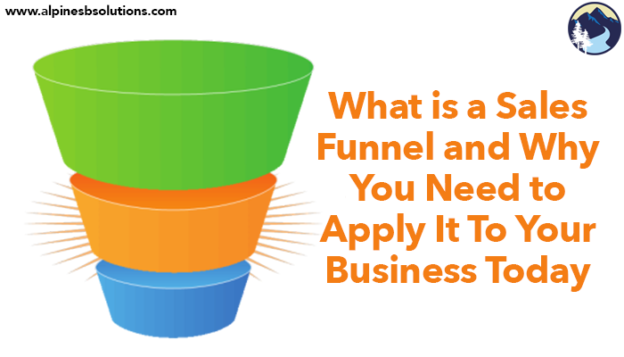

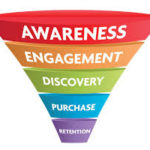 Marketers use tools to nurture leads along each stage of the funnel. Visitors to your site can give their email in exchange for a free downloadable guide (gaining awareness). A follow-up email gives them a curated list of relevant blog articles on the site (gaining interest). A follow-up email to that gives them a case study showing the benefits of your products/services (gaining desire). A follow-up email to that gives them a coupon to buy your products/services (taking action).
Marketers use tools to nurture leads along each stage of the funnel. Visitors to your site can give their email in exchange for a free downloadable guide (gaining awareness). A follow-up email gives them a curated list of relevant blog articles on the site (gaining interest). A follow-up email to that gives them a case study showing the benefits of your products/services (gaining desire). A follow-up email to that gives them a coupon to buy your products/services (taking action). they need to know it exists. Insert the marketing funnel! You can use the marketing funnel to direct people to the end action: acting on the trip wire. Social media, blog posts, emails can all give that push towards buying the trip wire. Not everyone will make it from gaining awareness to making that purchase. But strategic marketing can help get more people to that purchasing point.
they need to know it exists. Insert the marketing funnel! You can use the marketing funnel to direct people to the end action: acting on the trip wire. Social media, blog posts, emails can all give that push towards buying the trip wire. Not everyone will make it from gaining awareness to making that purchase. But strategic marketing can help get more people to that purchasing point.
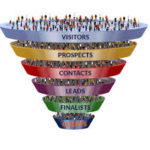 You’ve probably heard this phrase before. Many, many, many times I imagine. Let’s quickly debrief anyway.
You’ve probably heard this phrase before. Many, many, many times I imagine. Let’s quickly debrief anyway. Automation, when done well, can be a marketer’s best friend. First of all, it saves you an immense amount of time. Instead of you sitting down to individually send an email to people at each stage of the funnel, these emails can be sent automatically.
Automation, when done well, can be a marketer’s best friend. First of all, it saves you an immense amount of time. Instead of you sitting down to individually send an email to people at each stage of the funnel, these emails can be sent automatically.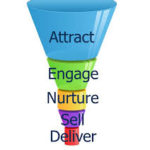 attention (since that “unsubscribe button” is all too easy to press). Send a follow-up email to those who subscribed giving them more helpful information. Nothing sales-y here either! The goal is to intrigue your audience about your brand by showing you know your stuff. Send an email with a round-up of useful articles on the given topic. Share valuable resources. Prove that your emails (and your company) offer value.
attention (since that “unsubscribe button” is all too easy to press). Send a follow-up email to those who subscribed giving them more helpful information. Nothing sales-y here either! The goal is to intrigue your audience about your brand by showing you know your stuff. Send an email with a round-up of useful articles on the given topic. Share valuable resources. Prove that your emails (and your company) offer value.
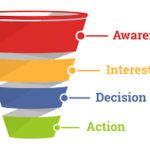 The “
The “ When you create a social media sales funnel, you supercharge your
When you create a social media sales funnel, you supercharge your 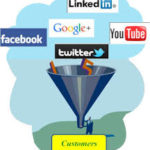 Once you know which channels to be on, you can work on generating that awareness. Facebook ads, for example, can help potential customers discover your page. When applicable, tag other organizations in your posts to help your posts show up on their followers’ pages. Cross promote your social channels through strategies like including the social links in your email signatures or newsletters.
Once you know which channels to be on, you can work on generating that awareness. Facebook ads, for example, can help potential customers discover your page. When applicable, tag other organizations in your posts to help your posts show up on their followers’ pages. Cross promote your social channels through strategies like including the social links in your email signatures or newsletters.

 year. It’ll change as unexpected expenses and outstanding situations arise, but it will help provide the
year. It’ll change as unexpected expenses and outstanding situations arise, but it will help provide the 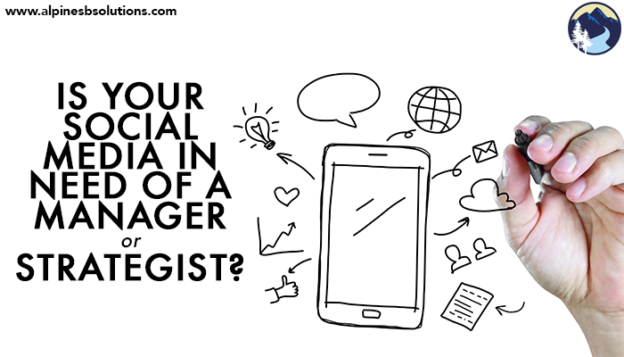
 Think of your social media as a body. Your goal is a healthy thriving body, which requires two approaches.
Think of your social media as a body. Your goal is a healthy thriving body, which requires two approaches. You also need to take a long-term approach, adopting and adapting
You also need to take a long-term approach, adopting and adapting  business is chugging along like normal, you can match that approach in
business is chugging along like normal, you can match that approach in 
 You can’t find the perfect candidate if you don’t know what the perfect candidate looks like. Start off by figuring out what tasks you need accomplished (hint: you can use our
You can’t find the perfect candidate if you don’t know what the perfect candidate looks like. Start off by figuring out what tasks you need accomplished (hint: you can use our  Once you’ve got a clear picture of what you need, you can start spreading the word that you’re looking for a new virtual assistant. You’ll need to create a clear job listing that details everything you need (i.e. everything from step one). Include something quirky to make sure the person actually reads your listing and can follow directions (for example, asking candidates to mention their favorite movie in the last paragraph to ensure they aren’t just mass posting an application).
Once you’ve got a clear picture of what you need, you can start spreading the word that you’re looking for a new virtual assistant. You’ll need to create a clear job listing that details everything you need (i.e. everything from step one). Include something quirky to make sure the person actually reads your listing and can follow directions (for example, asking candidates to mention their favorite movie in the last paragraph to ensure they aren’t just mass posting an application). Ask candidates for a resume, references, and work samples to ensure their experience and work is up to your standard. Conduct an in-person or webcam interview to get a feel for them beyond their application. It’ll allow you to get a glimpse into their work setting, their fluency of English, their personality, their energy, and all the other intangibles that play a role into how they will fit into your organization. Even though they won’t be coming into the office, it’s important to be sure that their
Ask candidates for a resume, references, and work samples to ensure their experience and work is up to your standard. Conduct an in-person or webcam interview to get a feel for them beyond their application. It’ll allow you to get a glimpse into their work setting, their fluency of English, their personality, their energy, and all the other intangibles that play a role into how they will fit into your organization. Even though they won’t be coming into the office, it’s important to be sure that their
 Imposter syndrome is often confused with a few other things, so let’s clear that up right now. Imposter syndrome is not humility (which is an accurate view saying your worth isn’t more than someone else). Imposter syndrome is a warped and false view of your “lack” of
Imposter syndrome is often confused with a few other things, so let’s clear that up right now. Imposter syndrome is not humility (which is an accurate view saying your worth isn’t more than someone else). Imposter syndrome is a warped and false view of your “lack” of  It tells us we just got lucky. It wasn’t our hard work, talent, and ambition that got us that success. We just happened to be at the right place at the right time (which, by the way, is why you shouldn’t take a chance now because your luck may run out).
It tells us we just got lucky. It wasn’t our hard work, talent, and ambition that got us that success. We just happened to be at the right place at the right time (which, by the way, is why you shouldn’t take a chance now because your luck may run out). Don’t try to fix it with success. Sometimes people think the way to overcome imposter syndrome is to pursue more accomplishments. But, the underlying root of imposter syndrome is not being able to accurately internalize your own success and abilities. Simply piling on more success won’t do anything to make imposter syndrome go away.
Don’t try to fix it with success. Sometimes people think the way to overcome imposter syndrome is to pursue more accomplishments. But, the underlying root of imposter syndrome is not being able to accurately internalize your own success and abilities. Simply piling on more success won’t do anything to make imposter syndrome go away.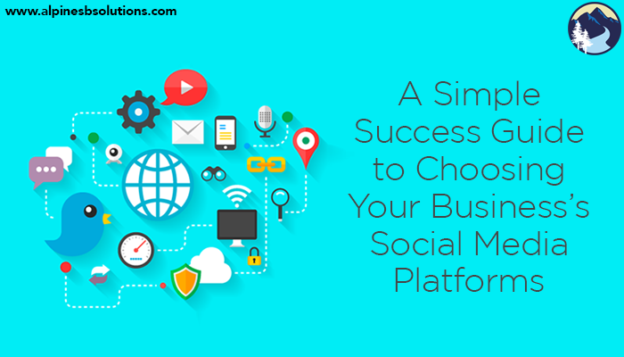

 Twitter is a great tool to direct individuals to your website. In this way you can think of Twitter and your website like a news story. The headline and the lead are the Twitter post: it draws you in and provides just enough information you know what you’ll be reading about. The body of the article is your website post: the substance and entirety of what you want your audience to read. While posts can be great at directing individuals to your site, not every post needs to. Some posts can be a short story or message in of themselves.
Twitter is a great tool to direct individuals to your website. In this way you can think of Twitter and your website like a news story. The headline and the lead are the Twitter post: it draws you in and provides just enough information you know what you’ll be reading about. The body of the article is your website post: the substance and entirety of what you want your audience to read. While posts can be great at directing individuals to your site, not every post needs to. Some posts can be a short story or message in of themselves.  Linkedin is great for increasing brand awareness and acquisition. Individuals can publish articles on
Linkedin is great for increasing brand awareness and acquisition. Individuals can publish articles on  Marketers post content to help boost their SEO. Oftentimes marketers strapped for time post their Facebook posts on
Marketers post content to help boost their SEO. Oftentimes marketers strapped for time post their Facebook posts on  Creating engaging videos is a great way to turn out shareable content, engage audiences, and improve SEO.
Creating engaging videos is a great way to turn out shareable content, engage audiences, and improve SEO.  Like Twitter,
Like Twitter, 
 you avoid too many keywords (which can make your profile a dry read). You really want to think about what your audience is looking for and write for that. Answer those questions, and use those words. Utilize a few strategies to establish the best keywords for you. First, brainstorm words and phrases likely to be searched by the individuals you want viewing your profile. Second, read through profiles of leaders in your target markets to find common keywords they use. Third, examine keywords used in job postings by your target employers. Integrate these keywords throughout your profile, from your specialties section to your link descriptions.
you avoid too many keywords (which can make your profile a dry read). You really want to think about what your audience is looking for and write for that. Answer those questions, and use those words. Utilize a few strategies to establish the best keywords for you. First, brainstorm words and phrases likely to be searched by the individuals you want viewing your profile. Second, read through profiles of leaders in your target markets to find common keywords they use. Third, examine keywords used in job postings by your target employers. Integrate these keywords throughout your profile, from your specialties section to your link descriptions.